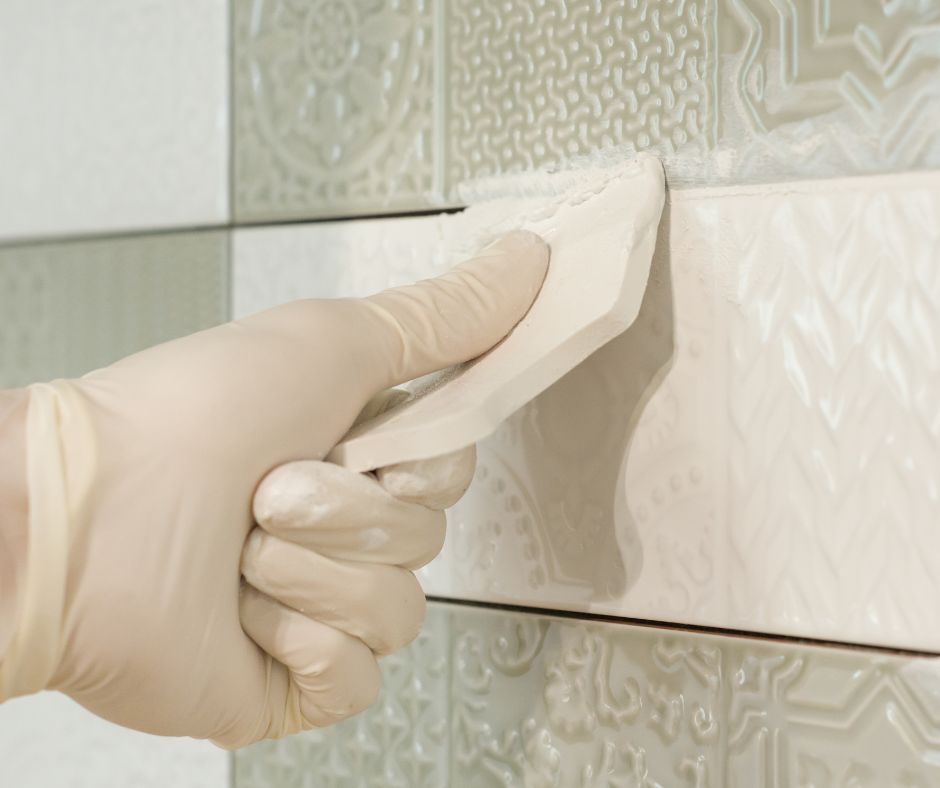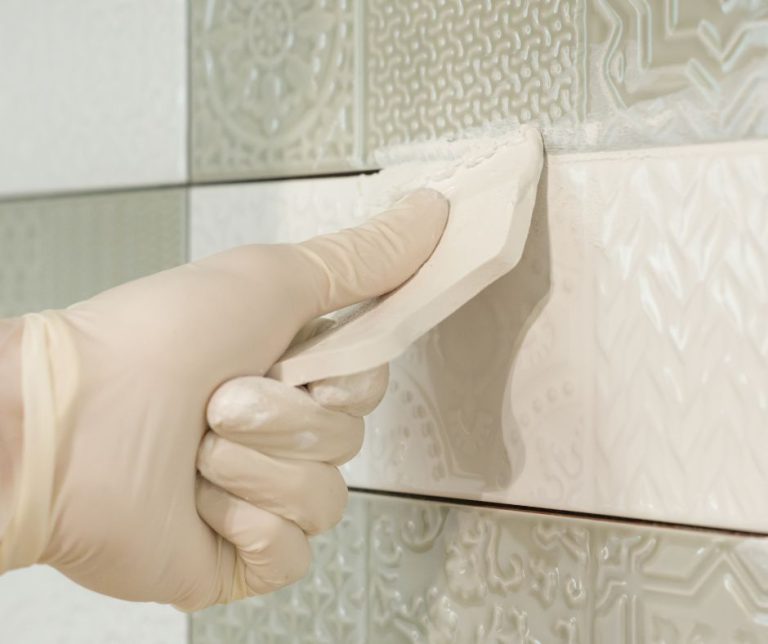Have you recently discovered unsightly holes in your shower tile grout? Don’t fret! Although these imperfections can diminish the aesthetic appeal of your shower, they are completely manageable and straightforward to fix. It’s essential to address these issues promptly to prevent more severe complications from developing over time. The good news is that repairing these holes is a simple task!
This detailed guide will walk you through an effective, step-by-step process for repairing holes in your shower tile grout. We will also delve into the common causes of grout damage and share valuable preventive measures that can help you avoid these issues in the future, ensuring your shower remains in pristine condition.

Step-by-Step Instructions to Successfully Repair Holes in Your Shower Tile Grout
Repairing grout holes might seem daunting at first, but with the right guidance, it can be a simple and rewarding task. Let’s navigate through each crucial step together to restore your shower’s appearance, making it look pristine and inviting once again.
#1 Collect Essential Tools for Effective Grout Repair
Before embarking on your grout repair project, it’s vital to gather all the necessary tools and supplies to ensure the task is both efficient and effective. Here’s a comprehensive list of what you’ll need:
- Grout removal tools
- Caulk gun
- Grout that harmonizes with your existing tile color
- Grout float for accurate application
- A sponge for post-repair cleanup
- A bucket of water for rinsing
- Masking tape for clean edges
Don’t forget to wear gloves and safety glasses for your protection throughout the process. Having all your tools organized before you begin will streamline the entire repair operation, making it less stressful and more enjoyable.
Also Read: Epoxy Grout VS Cement Grout
#2 Prepare Your Shower Area Thoroughly for Grout Repair
With your tools ready, it’s crucial to prepare the area for repair properly. Start by applying masking tape around the grout lines where the holes are situated. This will help ensure that the new grout stays in place, resulting in a clean and professional finish.
Next, utilize your grout removal tool to carefully extract the old, damaged grout. Be cautious during this step to avoid scratching the tiles; if you’re working in a shower, take care not to damage the waterproof membrane beneath the tiles. This preparation step is essential because it provides a clean and stable surface for the new grout to adhere to effectively, ensuring a durable repair.
Also Read: Why Grout Gets Stained And Damaged
#3 Clean Your Workspace Thoroughly Before Applying New Grout
Once you’ve removed the old grout, it’s time to clean the area meticulously. Use a slightly damp cloth to wipe down the surface, ensuring all dust and debris from the grout removal process is eliminated. Allowing the area to dry completely before applying the new grout is vital; a dry surface will significantly enhance the adhesion of the new grout, leading to a more durable and effective repair.
#4 Skillfully Apply New Grout for a Professional Finish
Now comes the exciting part! Prepare your grout according to the instructions provided on the packaging. Achieving the perfect consistency is key—make sure it’s neither too watery nor overly thick.
Using your grout float, apply the new grout over the holes, ensuring you push it in at an angle. This technique helps fill all gaps and creates a smooth finish. Once the holes are filled, use the float to level the surface and remove any excess grout, ensuring it looks tidy and professionally done, enhancing the overall appearance of your shower.
#5 Gently Remove Excess Grout for a Refined Appearance
After allowing the grout to set for a brief period, take your damp sponge and carefully wipe away the excess grout. Remember to rinse the sponge frequently to prevent grout from drying on it, which could complicate the cleaning process. This step requires patience, but achieving a polished, professional appearance is well worth the effort. Be meticulous to ensure perfection before allowing everything to dry completely and removing the masking tape for a clean finish.
Also Read: Regrouting Your Bathroom Grout
#6 Optional: Seal the Grout for Enhanced Longevity
If you want to bolster the durability of your grout, consider applying a grout sealer. While this step isn’t mandatory, it can provide significant protection against moisture and stains, thereby extending the life of your repair.
If you opt to seal the grout, allow a few days for it to cure fully before applying the sealer. Follow the manufacturer’s instructions for the best results, and you’ll add an extra layer of protection to keep your grout looking fresh and vibrant for years to come, enhancing your shower’s overall longevity.

Understand the Causes of Grout Damage and Learn How to Prevent Future Problems
Have you ever pondered what leads to those unsightly holes in your grout in the first place?
The primary offenders are usually moisture and harsh cleaning methods. Grout is inherently porous and can deteriorate over time, especially if it hasn’t been sealed adequately. Furthermore, showers face constant water exposure and frequent cleaning, which can exacerbate grout damage. Natural settling of your house over time can also cause minor shifts, leading to cracks or holes in the grout.
To prevent future holes from forming, consider sealing your grout after installation or repair. Additionally, using gentle cleaning products can significantly prolong the life of your grout. Steer clear of harsh chemicals that can degrade the grout over time and lead to more repairs.
Regularly inspecting your shower grout for any signs of damage can also be beneficial. Addressing any issues as soon as they arise will help prevent them from worsening and leading to more significant problems down the line, ensuring the longevity of your shower.
Essential Insights for Successful Grout Repair
Repairing holes in your shower tile grout is a task that you can definitely tackle on your own, and it can prevent more significant, costly issues from arising in the future. With the right approach and tools, you can restore your shower’s aesthetics and functionality.
If you would rather leave this task to the professionals, we are here to assist you. Our team specializes in efficiently completing the regrouting process, relieving you of the hassle. Regardless of your choice, addressing those holes will help maintain your shower’s functionality and aesthetic appeal for many years to come!
What to Do If Your Contractor Left Holes in Your Grout?
If you’ve recently undergone renovations in your bathroom and discovered holes in the grout, it’s imperative to contact your contractor immediately. A reputable professional should ensure that no holes or imperfections are left behind in the grout. Most reliable contractors will be more than willing to return and rectify these issues for your peace of mind.
How to Effectively Repair Pin Holes in Grout?
To address pin holes in the grout, begin by cleaning the area thoroughly and lightly dampening the surrounding grout. Next, press a small amount of grout into the holes, smoothing the patched area with your finger for a seamless finish. This simple yet effective method can significantly enhance the appearance of your grout, creating a more uniform look.
What’s the Process for Repairing Missing Grout in the Shower?
Fixing missing grout is quite similar to repairing holes. Ensure the area is thoroughly cleaned before applying new grout to the affected spots, and smooth it out using your grout float. Remove any excess grout, and allow it to dry completely for optimal results. By following these steps, you will ensure a neat and tidy finish that enhances the overall look of your shower.

The Article: Holes in Shower Tile Grout? Effective Solutions Inside! first appeared on https://writebuff.com.
References:
https://writebuff.com/holes-in-shower-tile-grout-effective-solutions-inside/





I really appreciate your insights on dealing with grout issues in the shower. It’s one of those home maintenance tasks that often gets pushed to the back of our minds, isn’t it? I remember the first time I noticed holes in my shower tile grout—it felt like my entire bathroom aesthetic was thrown off. I panicked a bit, thinking about how I’d have to hire someone or maybe even tackle a much bigger renovation. But following a process (like the one you’re outlining here) definitely makes it seem much more manageable!
It’s so true that grout issues can sneak up on us when we’re focused on more pressing tasks around the house. The way you described your initial reaction really resonates with me—seeing holes in grout can feel overwhelming, especially when it seems tied to larger renovation worries. It’s comforting to know that many of us have been in that panic mode at one point or another.
It’s true—grout issues can easily slip our minds until they become something we can’t ignore anymore. I can relate to that feeling of panic when you first notice wear and tear. It can feel overwhelming, especially with the thought of hiring help or diving into a big renovation. I’ve been there myself.
It’s great to hear that you found the article helpful. Grout issues can feel overwhelming, especially when they first catch your eye. It’s so common to overlook those small maintenance tasks until they start affecting the overall look of a space. I can relate to that moment when you notice the holes; it’s like a spotlight suddenly shines on something you hadn’t realized was a problem.
I really appreciate how you’ve broken down the process of repairing grout holes in such an approachable manner. It’s funny – I never really paid attention to my shower grout until I noticed a few unsightly holes peeking back at me after cleaning one day. At first, I thought it was a sign of some deeper issue, but thankfully, I stumbled upon a handy guide similar to yours that laid out the steps clearly.
It’s interesting how something as seemingly mundane as grout can suddenly grab our attention, especially when it’s not in great shape. A clean shower can really highlight those imperfections, and it’s easy to overlook the grout until it starts to look worn. It sounds like you had a similar experience to many of us—only noticing those little flaws after a deep clean. It’s almost like your shower is reminding you that it’s time for some TLC.
It’s interesting how we often don’t notice the little things around us until they start to stand out, isn’t it? Grout is one of those sneaky spots that can go unnoticed until one day there it is – right in our face. I completely get how that can spark a bit of panic thinking there’s a major issue lurking behind that tile. It’s great to hear you found a guide that helped clarify things for you.